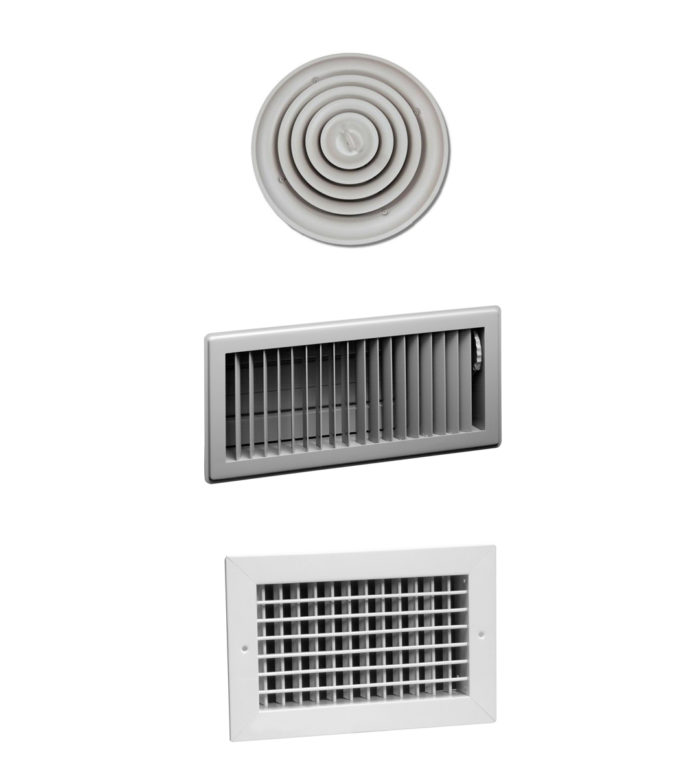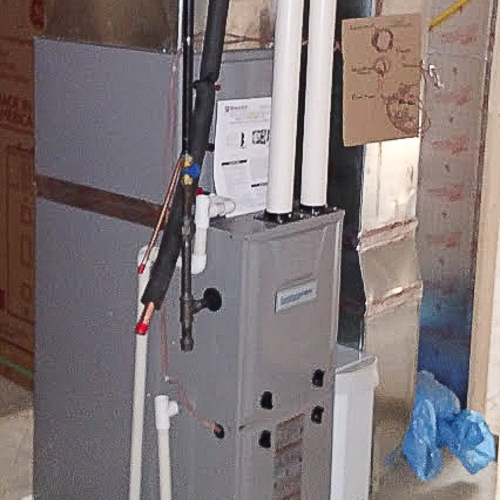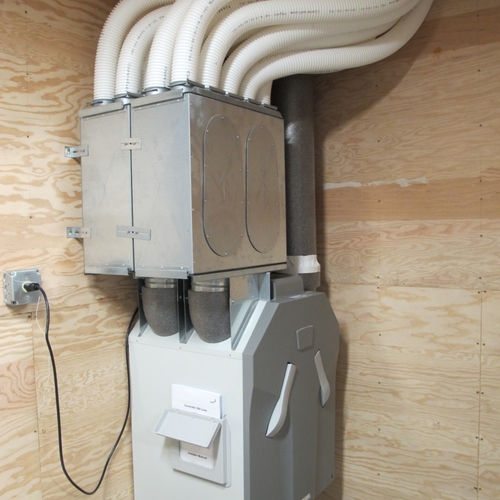
Image Credit: Photo collage by Martin Holladay
Most American homes have a bewildering array of diffusers, registers, and grilles that blow air out or suck air in. For many homeowners, these apertures are somewhat mysterious. We all know that there must be a duct behind each grille, but where does the duct lead?
Ducts are hidden tubes that snake through our buildings. Ducts play a surprisingly important role in many movie plots. Movie makers almost never explain what kind of duct we are looking at; all we know is that the ductwork is always big enough for a person to crawl through, and that the duct usually connects an inconspicuous mop closet with the computer server room of a major corporation or a hallway adjacent to a bank vault.
Does my home have a ventilation system?
It’s useful to have a solid understanding of the function of all these grilles and ducts. Otherwise, you’ll be like one of those homeowners who doesn’t know whether or not his home has a ventilation system. You know — the ones who say, “I turn on the air conditioning and cool air blows out the vents. That’s a ventilation system, right?”
Well, maybe — but probably not.
In this article, I’ll look at most of the grilles, registers, and diffusers in a typical house. First, we’ll determine whether these openings are designed to suck or blow. Then we’ll determine whether the air flowing through the openings is recirculated air or fresh outdoor air. All of this information will be useful if you want to determine whether your home needs a ventilation system.
A window-mounted air conditioner. This is a simple device that blows air into your room. Where does the air come from? Is it…
Weekly Newsletter
Get building science and energy efficiency advice, plus special offers, in your inbox.

This article is only available to GBA Prime Members
Sign up for a free trial and get instant access to this article as well as GBA’s complete library of premium articles and construction details.
Start Free TrialAlready a member? Log in















6 Comments
Dummy Grills
Pity the poor homeowner who uses this article to try and figure out the venting strategy used in the houses I build. I cut holes in the walls behind tubs for future access to traps, or elsewhere at drain connections and clean outs. These get covered with dummy grills to look like part of the ventilation system. What a big disappointment they will get when they remove them and find no ducts at all.
Response to Malcolm Taylor
Malcolm,
It's builders like you, with your clever April Fools jokes, that makes life difficult for writers like me (and for confused homeowners).
OK, homeowners -- you heard Malcolm. Step one: Get out a screwdriver and take off the grille to see what's behind it.
Martin
Looking behind the grill is a good idea in all aspects of life.
Response to Malcom Taylor
Malcolm,
I sure hope you've sealed the perforations created by traps, cleanouts, etc where they pass into the wall cavity. If not, you've most likely increased the air leakage rate on the home with your dummy grills.
Bryce
They are all on internal walls, as the intent is to allow access to plumbing. Any stacks are sealed at the top plates already.
I started doing this for two reasons: One was as an alternative to ugly cover plates to hide clean outs. The other was after the experience of having to cut a hole in a customer's wall to get at a tub trap. In circumstances like that there is no way you can just pop a vent into the hole and wave goodbye, but rather end up stuck with three trips to mud and paint the patch. If you already have a few access points in judiciously chosen places when the house is new, no one complains.
Ducts are sometimes big enough to crawl through...
Here is a link to a news story about an institutional building that had ducts that were big enough for a human to crawl through. (The story doesn't have a happy ending, however -- at least for the person who was trying to access a locked office by crawling through the duct.)
Student Arrested After Crawling Into a Duct to Steal an Exam.
Log in or become a member to post a comment.
Sign up Log in